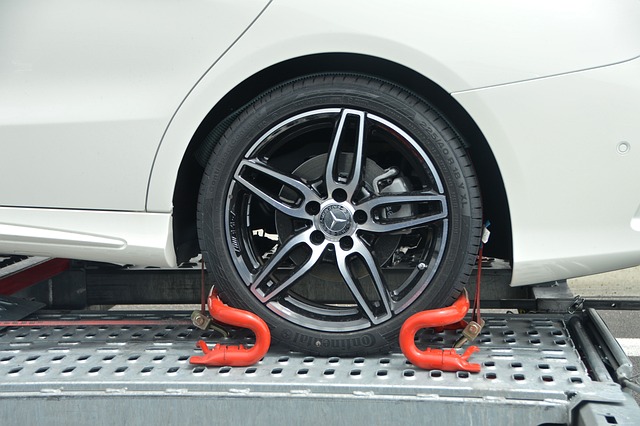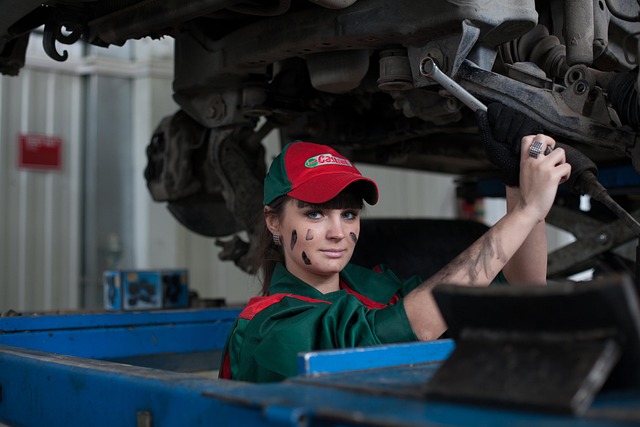Transferring vehicle ownership involves gathering necessary documents, completing state forms, updat…….
Category: State vehicle services
Introduction
Vehicle services under the auspices of a state are critical components of modern transportation infrastructure. These services encompass a wide array of functions from registration, licensing, inspection, and maintenance to the provision of specialized fleets for public service, emergency response, and governmental operations. This article delves into the multifaceted role of state vehicle services, their global impact, economic significance, technological advancements, policy frameworks, challenges, success stories, and future prospects. Readers will gain a comprehensive understanding of this essential sector and its vital contributions to society and economies worldwide.
Understanding State Vehicle Services
State vehicle services are the public or government-managed operations responsible for the maintenance, oversight, and deployment of vehicles owned or operated by the state. These services ensure that state-owned vehicles are safe, efficient, and compliant with regulations, providing transportation solutions for a variety of purposes. The core components of these services include:
- Vehicle registration and licensing
- Routine maintenance and inspection
- Fleet management for government agencies
- Specialized transport services (e.g., for the disabled or elderly)
- Emergency response vehicles
- Public transportation systems
Historically, state vehicle services have evolved alongside technological advancements and societal needs. From the early days of horse-drawn carriages to modern electric and hybrid fleets, these services have adapted to maintain their relevance and efficiency. They play a pivotal role in supporting public safety, providing essential services, and contributing to the state’s economic stability.
Global Impact and Trends
The impact of state vehicle services is felt across the globe, with trends influenced by factors such as urbanization, technological innovation, and environmental concerns. The demand for efficient, sustainable, and responsive transportation systems is growing, driven by the increasing mobility needs of urban populations and the imperative to reduce carbon emissions.
In developed nations, there’s a trend towards electrifying state vehicle fleets, while in developing countries, the focus is often on improving road safety and expanding public transport networks. The global response to climate change has also led to initiatives promoting the use of alternative fuels and eco-friendly vehicles within state fleets.
Economic Considerations
State vehicle services are integral to economic activity. They facilitate trade by ensuring that goods can be transported safely and efficiently, and they support public sector employment through fleet management positions. The economic aspects of these services include:
- Market dynamics influenced by fuel prices, technology advancements, and labor costs
- Investment patterns in new technologies like electric vehicles and alternative fuels
- The role of state vehicle services as a stimulator for local economies through maintenance, repair, and procurement activities
Investing in these services can lead to economic growth by creating jobs, fostering innovation, and enhancing productivity. Moreover, the efficient operation of state vehicle services is often a prerequisite for economic development in regions where transportation infrastructure is key to commerce and trade.
Technological Advancements
The evolution of technology has had a profound impact on state vehicle services. Innovations such as telematics, GPS tracking, and automation have transformed fleet management, improving efficiency and safety. The future potential of technologies like autonomous vehicles, renewable energy integration, and smart infrastructure presents even more opportunities for advancement:
- Autonomous vehicles could revolutionize public transport and emergency response services
- Renewable energy integration reduces the environmental footprint of state fleets
- Smart infrastructure can optimize traffic flow, reduce congestion, and improve road safety
These technological leaps will not only enhance the performance of state vehicle services but also contribute to broader societal goals like sustainability and improved quality of life.
Policy and Regulation
The governance of state vehicle services is shaped by a complex array of policies, regulations, and legislative frameworks. These include:
- Safety standards for vehicles and drivers
- Environmental regulations dictating emissions and fuel usage
- Accessibility requirements for public transportation
- Procurement policies for acquiring new vehicles and equipment
Compliance with these policies is critical for the operation of state vehicle services. They ensure that these services are performed in a manner that protects the environment, promotes safety, and serves the public interest.
Challenges and Criticisms
Despite their importance, state vehicle services face numerous challenges and criticisms. These include issues such as:
- Funding constraints that affect maintenance, upgrades, and personnel
- Aging infrastructure that requires significant investment to modernize
- Resistance to change, particularly in adopting new technologies or processes
- Public scrutiny on the efficiency and environmental impact of state fleets
To address these challenges, strategies such as public-private partnerships, phased implementation of new technologies, and performance-based funding models can be employed. Additionally, transparent reporting and community engagement can help build trust and support for these services.
Case Studies
Several case studies illustrate the successful application of state vehicle services:
- Sweden’s Electric Bus Fleet: A pioneer in electrifying public transportation, Sweden’s commitment to reducing emissions has led to a fully electric bus fleet in several cities.
- Singapore’s Smart Nation Initiative: Singapore’s use of technology to improve traffic flow and public transport efficiency serves as a model for smart city planning.
- Norway’s Electric Vehicle Incentives: Norway’s policies promoting the adoption of electric vehicles have made it a global leader in EV adoption.
These case studies provide valuable insights into the successful implementation of state vehicle services and highlight the potential for similar initiatives worldwide.
Conclusion
State vehicle services are essential components of modern society, impacting economic activity, environmental sustainability, and public welfare. As technology continues to advance and societal needs evolve, these services will need to adapt to maintain their relevance and effectiveness. Through careful policy-making, investment in innovation, and a commitment to addressing the challenges they face, state vehicle services can continue to serve as a cornerstone of community infrastructure and economic vitality.
This article provides a comprehensive overview of state vehicle services, covering historical context, current trends, economic implications, technological advancements, policy considerations, challenges and criticisms, and real-world case studies. It underscores the importance of these services in supporting society’s complex needs and the critical role they play in shaping the future of transportation and mobility.
Simplifying Vehicle Registration and Safety Checks: Your Comprehensive Guide
State-issued license plates play a crucial role in US vehicle identification and regulation, aiding…….
Modern DMV Services Say Goodbye to Waiting Lines
Digital solutions are modernizing state vehicle services (DMV), offering unprecedented convenience,…….
DMV Services Modernize: Safer Roads, Easier Navigation
Technology is revolutionizing DMV processes, making driver-government interactions more efficient an…….
DMV Services Evolution: Safer Roads, Streamlined Processes
DMV services go beyond basic registrations, ensuring road safety through vehicle compliance checks l…….
Digital DMV: Simplifying Vehicle Services with Online Access
The digital age has transformed DMV services, making them more accessible and efficient with online…….
Simplifying Car Compliance: New DMV Rules Ease Roadworthiness
State-mandated car inspections, emissions testing, and Real ID compliance are vital for vehicle safe…….
Digital Integration Streamlines Motor Vehicle Services in 2024
The digital age has transformed motor vehicle services with real-time online registration and licens…….
Digital Transformation Streamlines Motor Vehicle Services in 2024
The digital revolution is streamlining government interactions, particularly in motor vehicle servic…….
Streamline Vehicle Ownership Transfer with Digital Services
Transferring vehicle ownership involves gathering essential documents, creating a bill of sale, and…….









